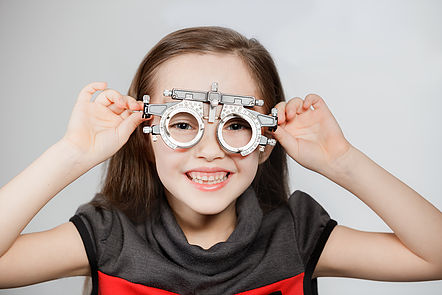
The American Optometric Association recommends the first eye exam at 6 months old, again at 3 years old, and then 5 years old. Children should then be seen annually until they are 18.
But since our children don’t know this, they often go undiagnosed with visual problems. Approximately 95% of visual issues are missed at pediatrician visits and screenings. It is very important to have children's (as with everyone) vision checked regularly by an optometrist.
Visual skills are important for learning. In fact, 80% of our learning comes directly from what we see and how we process that visual information. The tests in an eye exam will check for:
- Visual Acuity at Distance
- Visual Acuity at Near
- Eye Muscle Movements
- Eye Pairing Skills (Binocularity)
- Focusing Skills
- Eye-Hand Coordination
- Peripheral Awareness
- Color Vision
As a parent, you may be wondering what to expect at your child’s first eye exam. Here are some things you should know: the exam will be tailored to the age of the child, the optometrist will utilize various instruments to obtain data, and you should schedule the exam for a time when your child is alert and ready (maybe not first thing in the morning).
Be sure to inform your doctor of any medical issues like allergies or twitches a teacher may have noted in class, so your optometrist has a thorough case history on your child. When asked, children typically respond that everything is fine, because they are not aware that certain things like squinting or blurry vision are abnormal. It is your job to make sure they get to the optometrist regularly to avoid this problems - soon your child will be able to gage on their own what is normal and what is not when it comes to their vision.


